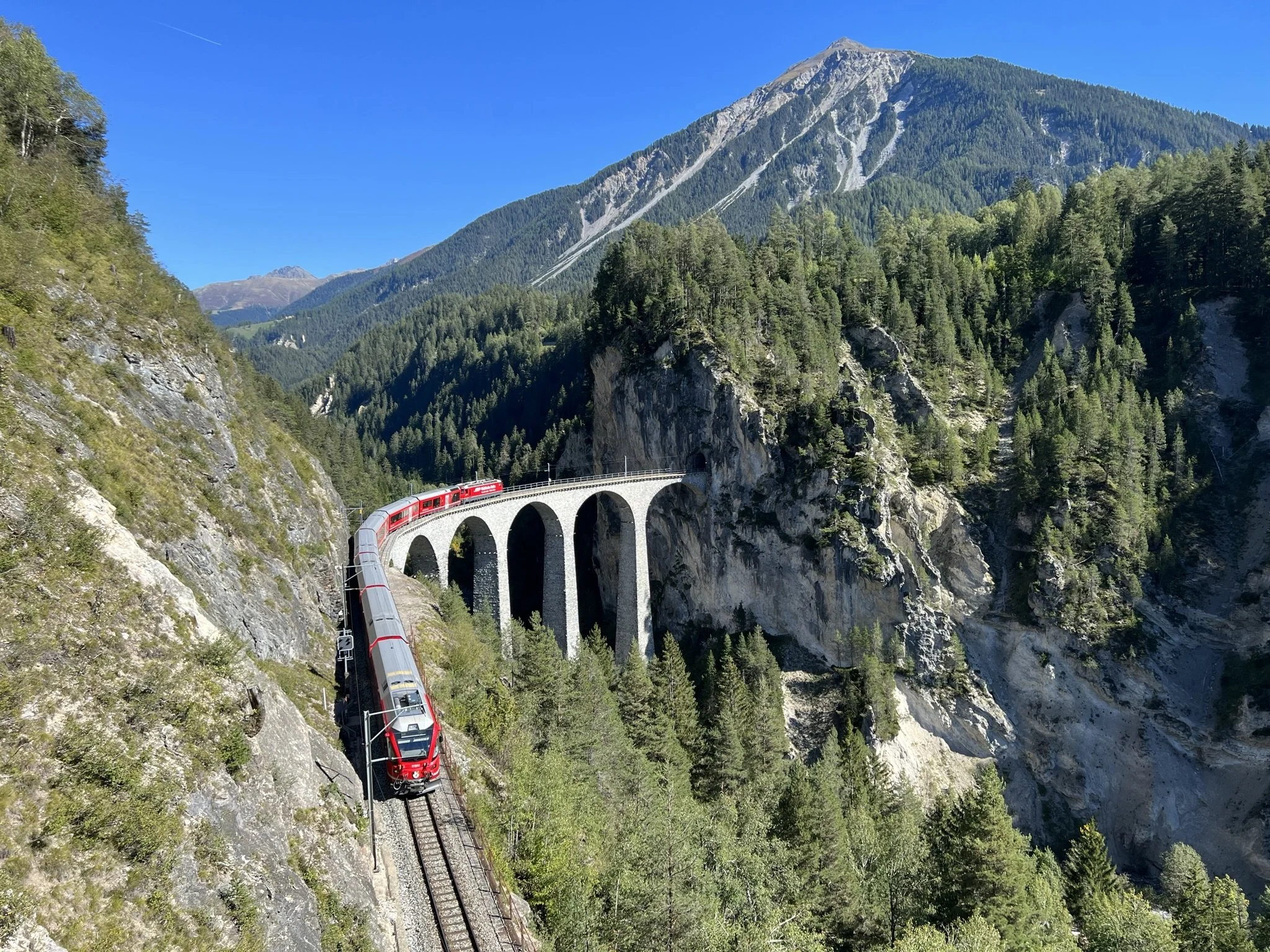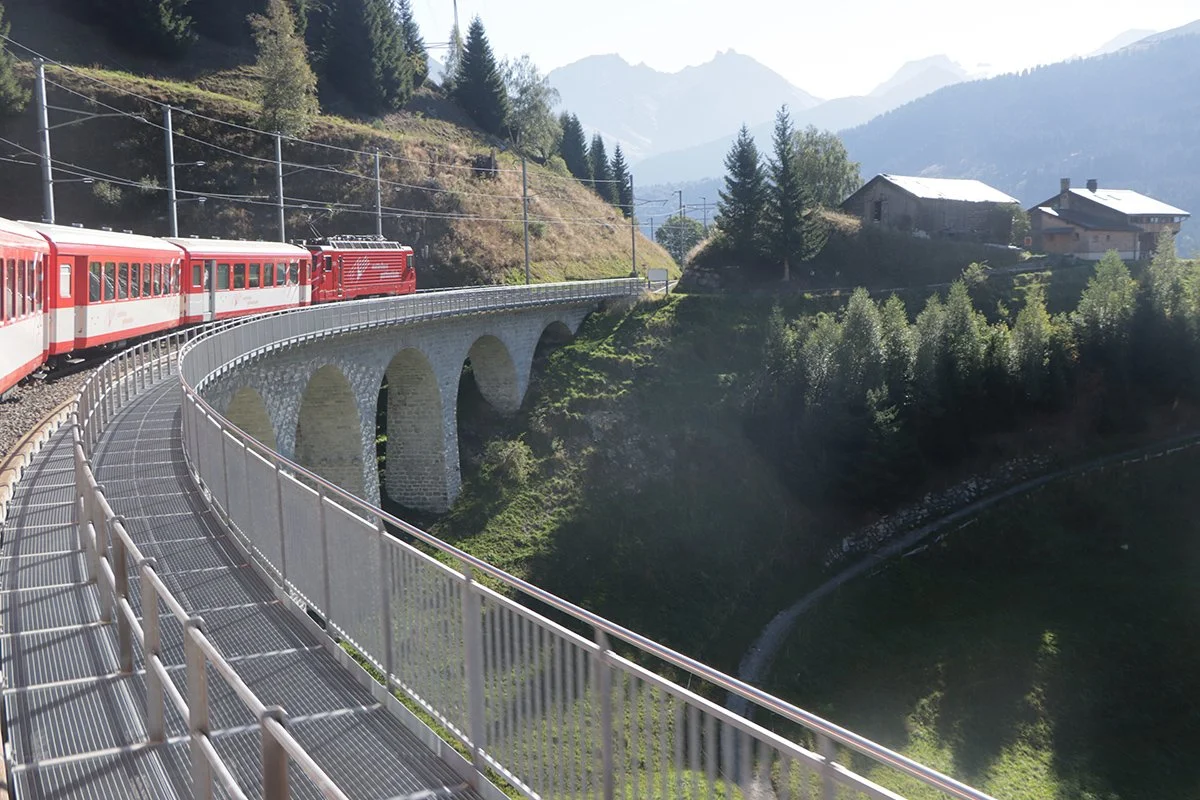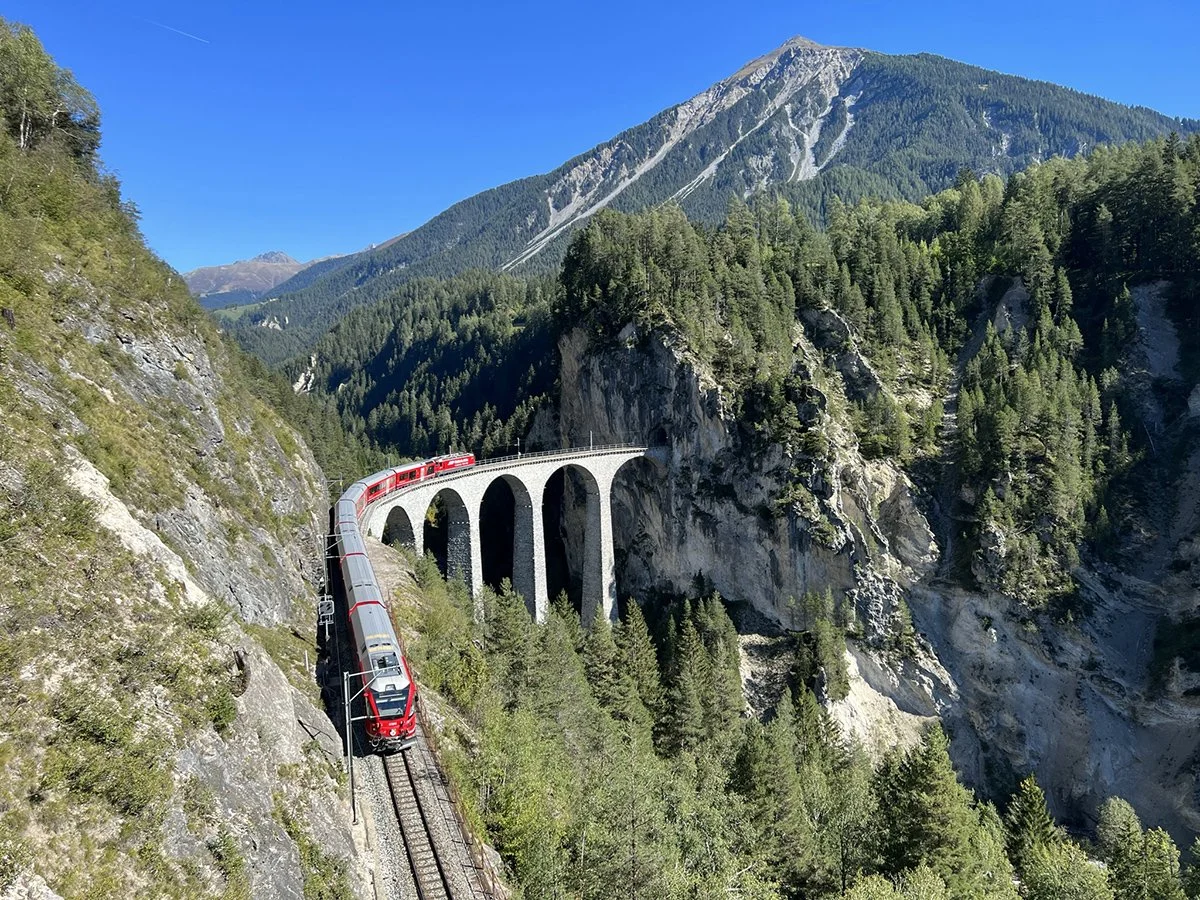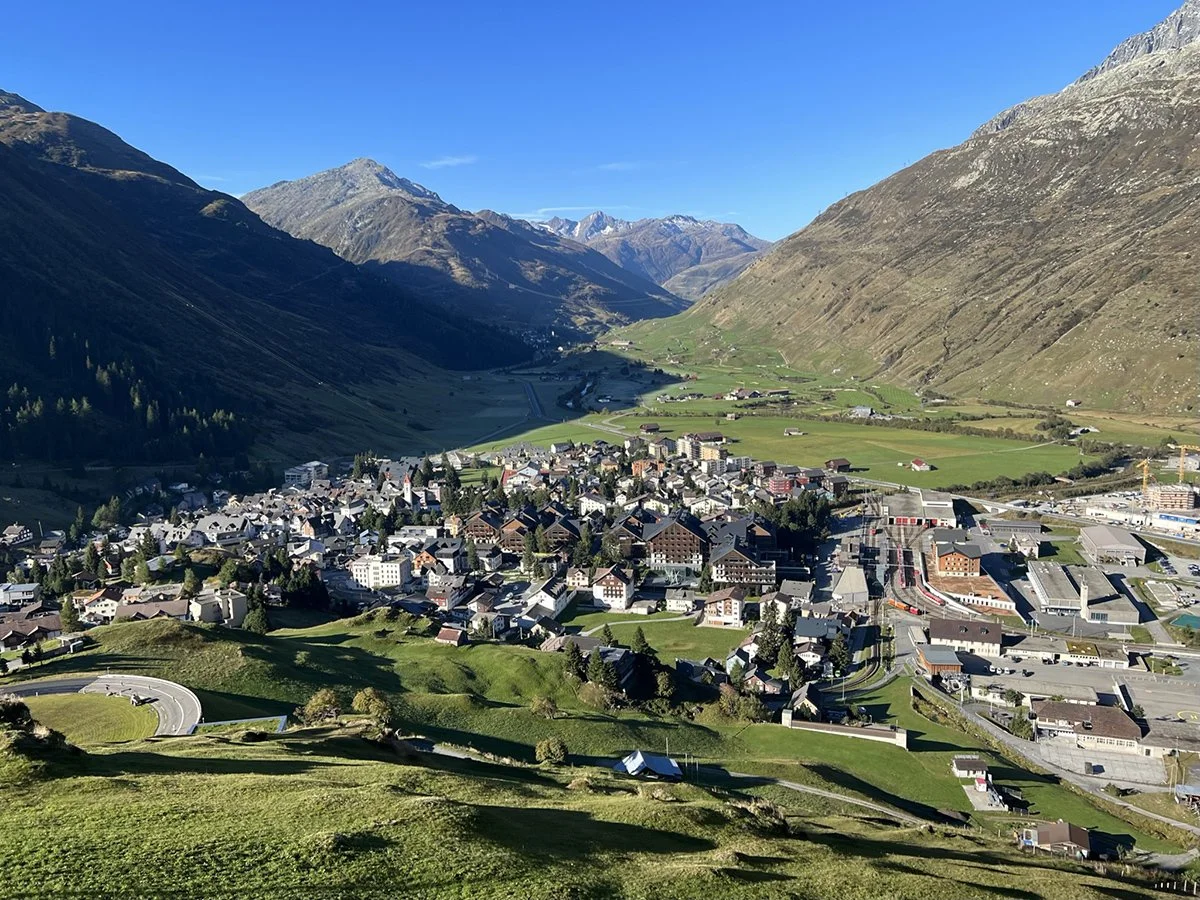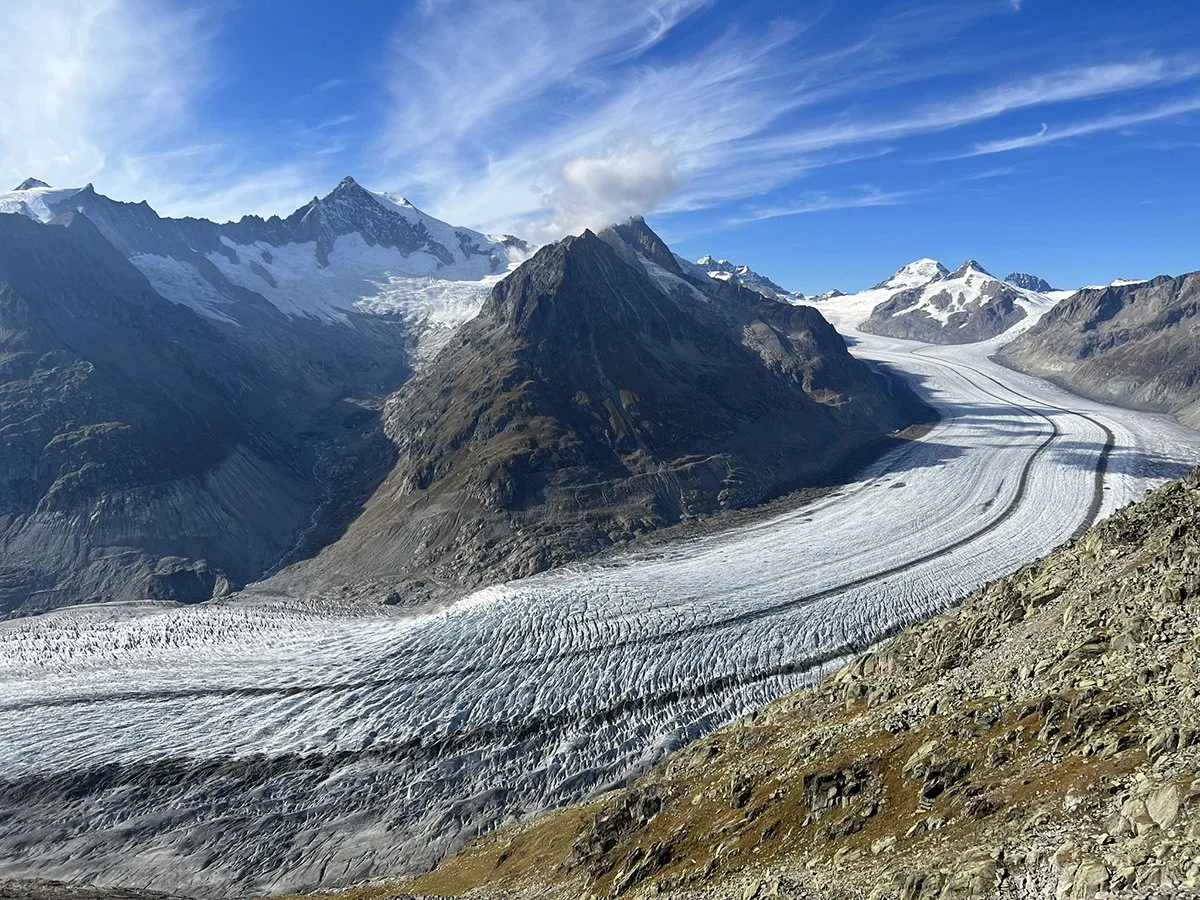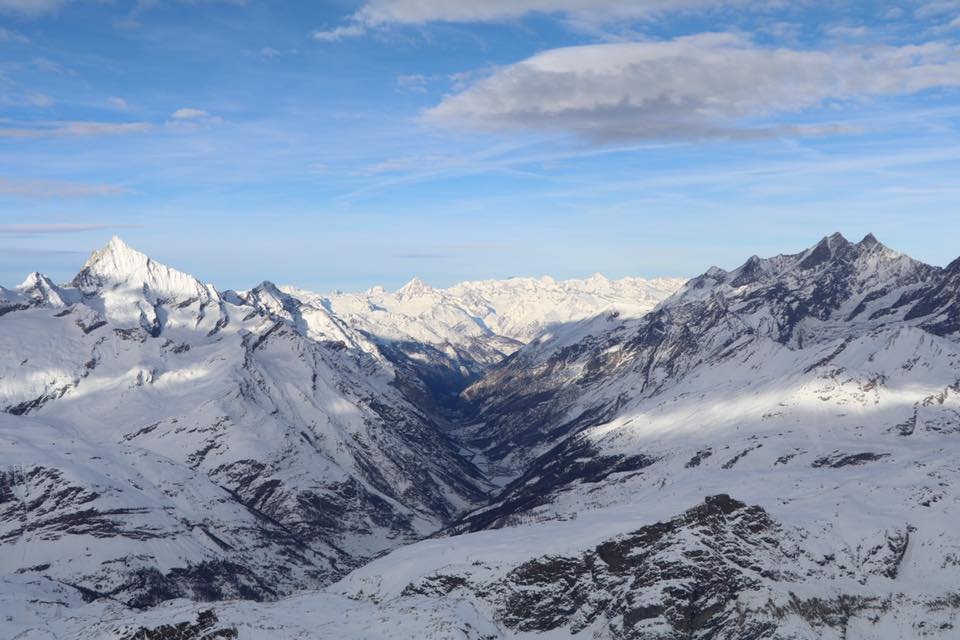You might not know what you’re missing - five reasons not to travel on the Glacier Express and Bernina Express (and three more reasons why you should)
It is difficult to introduce the Glacier Express and Bernina Express routes without wallowing in at least some low-level cliché. They are amongst the world’s great railway journeys as well as bucket-list items ticked off by many thousands of people every year.
So, of course, I’m writing this piece to tell you why you shouldn’t take those trains.
Don’t worry, I’ve not suddenly developed an aversion to trains, or mountains, or Switzerland, or Swiss mountain railways – and I’m not trying to be contrary. What I do want to do is draw the distinction between the Glacier Express and Bernina Express named trains, and the routes that they travel on.
The Glacier Express is a joint venture between two railway companies – the Matterhorn Gotthard Bahn and the Rhätische Bahn (Rhaetian Railway). It runs from Zermatt to St Moritz via Chur. The Bernina Express is operated solely by the Rhätische Bahn and runs from Chur to St Moritz and then over the Bernina Pass, before finishing just over the Italian border in Tirano. Collectively these – along with a number of other scenic Swiss routes – are known as Panorama Expresses, and you’ll see them marked as “PE” on departure boards and timetables.
In 2008, UNESCO inscribed the Rhaetian Railway in the Albula / Bernina Landscapes as a World Heritage Site. The UNESCO listing covers almost all the Bernina Express route, and both services traverse the Albula railway, which includes the defining landmark of the route – the spectacular curved viaduct over the Landwasser, near Filisur. The UNESCO listing explains how the railway “constitutes an outstanding technical, architectural and environmental ensemble and embodies architectural and civil engineering achievements, in harmony with the landscapes through which they pass”.
Not that the remainder of the Glacier Express route - which travels from the foot of the Matterhorn at Zermatt, over the Oberalp Pass, and through the Rhine Gorge – is any slouch in the scenery department either.
Without delving deep into the minutiae of the workings of the Rhätische Bahn and the Matterhorn Gotthard Bahn, there are two ways of traversing these routes – on the dedicated panorama expresses with their distinctive panoramic coaches and copious marketing budgets, or on the regular local trains run by the same companies over the same tracks to the same destinations.
Out of the window of a Matterhorn Gotthard Bahn service between Andermatt and Disentis/Mustér
Here are my five reasons why you should eschew the fancy panoramic rolling stock and enjoy the journey on the regular local services instead. To maintain a little bit of balance, I’ve also picked out three scenarios where you’d be better off on the panorama expresses.
This article was written in October 2022 and all prices listed are for the 2022 season. At the time of writing, the exchange rate is around CHF1.1 for £1, or CHF1 for $1.
Rhätische Bahn train on the Landwasser Viaduct
The scenery is the same, but the prices aren't
Whether you are travelling on a point-to-point ticket, with a Swiss rail pass, or an Interrail ticket, you still must pay the reservation fees for the Glacier Express and Bernina Express services – and you’ll almost certainly have to book in advance.
A full trip on the Glacier Express carries a reservation fee of 49 Swiss Francs (CHF) in the high season, and even a shortened journey in low season will set you back CHF29. The Bernina Express is a little cheaper - reservation fees range from CHF26 at the height of summer to CHF20 in November and early December.
Compulsory reservations also create an additional drawback – inflexibility. Although there is undoubtedly a rugged beauty to a brooding cloud-covered mountain, there’s little doubt that you get the most value out of a scenic rail trip on a good weather day.
Travelling on the regular local services, by contrast, carries no supplement and requires no reservation – just the cost of your regular ticket.
A short note about Swiss rail tickets. Point-to-point tickets in Switzerland are extremely expensive; a one-way trip from Zermatt to St Moritz will set you back CHF152 in second class or CHF268 in first class. You don't have to go very far to be better off purchasing a Swiss Travel Pass (if you're only travelling within Switzerland), an Interrail or Eurail Pass (if you plan to visit other countries as well), or at the very least the Swiss half-fare card, which does exactly what it says it does. There are also some fantastic regional pass options depending on which part of Switzerland you plan to visit.
It is also worth mentioning that not all trains marked as “panorama express” in Switzerland require a supplement or advance booking – check before you travel.
Rhätische Bahn train at Lago Bianco
You can travel on the Bernina Express service without paying the supplement anyway
The Allegra is an electric multiple unit passenger train and one of the backbones of the Rhätische Bahn fleet. The RhB own 20 of these units – five four-car trains which are used for commuter services into Chur, and 15 three-car trains which are used for services across much of the network.
One of the jobs the Allegra units are asked to perform is hauling the Bernina Express. The three cars of the Allegra have 114 seats in them, and you don’t need a reservation to sit in those seats. In fact, you can’t reserve them.
So just to recap: you can board the Allegra unit and enjoy the same route as the Bernina Express at the same time and on the same train – but with just a regular ticket and no need to either book in advance or cough up for the supplementary charge.
You sometimes see an older railcar hauling the panoramic stock rather than an Allegra unit, but the principle remains the same.
Bernina Express on the Landwasser Viaduct
Mind your windows
I would never call myself a photographer, but I do like to take photographs. Lots of photographs, as you may have noticed if you've read a few of my articles on this site or followed my Instagram. No matter whether you've got a high-end camera or a mid-range DSLR, or you are just trying to take a few casual shots using your camera phone - big panoramic windows aren’t actually any good for photography.
Although it varies a little depending on the lighting conditions, you're as likely to capture your own mug (as well as those of your neighbouring passengers) as you are the magnificent vista in front of you. Even if you aren't trying to take photographs and are just gazing happily out of the window, you'll still have to cope with those same reflections.
The Bernina Express carriages do have a handful of opening windows at the ends of the carriages, but this just creates the bizarre spectacle of multiple travellers crowding around tiny windows whilst ignoring their expensively reserved panoramic seats.
Meanwhile, most (although I'm not sure quite all) of the regular trains on both the Matterhorn Gotthard Bahn and the Rhätische Bahn (including the Allegra unit that hauls the Bernina Express) have at least some windows that open and allow you to photograph the spectacular scenery unencumbered by a pristine reflection of the remains of the picnic you bought from the Migros or Co-op at the station.
A view of Andermatt from the window of the Matterhorn Gotthard Bahn train to Disentis/Mustér
You’ll get more space
I’ve watched the Glacier Express go by in winter, summer, and autumn, although I will confess I have yet to visit southern Switzerland in the springtime. I’ve yet to see an occasion where the regular service train was busier than the Glacier Express service running in front of it or behind it.
It might feel counterintuitive, but the local services are usually quieter than the panorama expresses. When I hopped on the Allegra hauling the Bernina Express at Bergün/Bravuogn in September 2022, it was far quieter than the panorama coaches being hauled behind. It shouldn’t be too much of a surprise, when both the Glacier Express and Bernina Express are marketed and priced to maximise occupancy for tourist traffic.
This extra breathing space is even more welcome on a scenic route – you are far more likely to be able to switch from left to right and back again to catch the best view. Heading eastbound towards Chur, the best views switch from primarily on the right hand side for the bulk of the journey to being on the left hand side as you enter the Rhine Gorge. That’s not a problem if you can just swap seats, nor are your photographs likely to be photobombed by someone else’s hand and iPhone.
Out of the window at the Ruinaulta / Rheinschlucht / Rhine Gorge
You might not know what you’re missing
Fiesch is a municipality in the east of the canton of Valais. It’s a quiet and picturesque little village in the Rhône valley with a nice church. A gondola runs from the valley floor up to the small plateau of Fiescheralp, a car-free sun terrace with hotels and restaurants perched overlooking the valley below. From there, you can take the cable car up to Fiescherhorli, a secondary summit of the Eggishorn (2,927m).
Although the Eggishorn is only a few hundred metres from Fiescherhorli, this isn’t the short summit stroll you might expect – it’s a proper little hike with a descent to the col and a steep clamber over rocky terrain with a level of exposure. I found it exhilarating; for those with less head for heights, there’s a fine set of viewing platforms close to the upper station of the cable car.
No matter your viewpoint, providing the cloud hasn’t enveloped you, you’re guaranteed one of the most exceptional vistas in a country overloaded with beauty. The Aletsch Glacier is another UNESCO world heritage site and a genuine natural wonder, and the Eggishorn is arguably the finest place to view it. I was really pleased with how my photographs turned out, but they don’t begin to convey the enormity and scale of the glacier as it winds away from the Eiger, Mönch, and Jungfrau in the far distance.
Aletsch Glacier from the climb up to the Eggishorn summit
The Glacier Express doesn’t stop at Fiesch. It doesn’t stop at Betten, which is a little further down the valley and the gateway to another Aletsch Glacier viewpoint at the Bettmeralp. It doesn’t stop at Versam Safien either, at the heart of the Rheinschlucht (Rhine Gorge) and referred to by some as the Swiss Grand Canyon. The Rheinschlucht at least is visible from the train, but you won’t see anything of the Aletsch Glacier from the comfort of your panorama express.
That’s not to say that there isn’t beauty at those places where you the panorama expresses do stop. You might want to hike to the viewing platform from Filisur for a better view of the iconic Landwasser Viaduct, for example (and you should – it was a must-see for me).
Even if your train does stop though – you can’t get off it. Well, you can (this isn’t some strange Swiss railway version of Alcatraz) but then you’ll need a second expensive reservation if you wish to continue your journey by the same means – and that’s assuming there’s another service later in the day. In the winter season, there’s only one Glacier Express and one Bernina Express each day in each direction.
If you want to explore - and wow, you should - you’ll need those local trains to get around.
Eggishorn summit cross, with the Aletsch Glacier behind
Let’s keep things balanced. Here are three reasons why you should travel on the Glacier Express and Bernina Express.
If accessibility is a key consideration
I love hopping on and off trains, but I know that this isn’t everyone’s idea of fun, and for many people it is completely impractical.
A full run of the Glacier Express route on regular service trains would involve four changes, with connections at Brig (or Visp), Andermatt, Disentis/Mustér (where you change from the Matterhorn Gotthard Bahn to the Rhätische Bahn), and Chur (or Reichenau-Tamins). You can do the Bernina Express route with just one change at St Moritz, although it is usually quicker to cut the corner by changing twice – at Samedan and Pontresina.
The panorama expresses are the only trains that run straight through on each route without needing to change. For some visitors this will be an important consideration (perhaps you’re on a multi-leg trip with heavy baggage) and for others - particularly those with limited mobility - it will be an essential requirement.
Bernina Express at Lago Bianco
If you want the touring holiday experience
With on-board information and commentary, and an entire train of fellow passengers on the same itinerary as you for the day, the panorama expresses offer the sort of immersive “touring holiday” experience to which many travellers are accustomed. If you are a fan of European river cruising or coach holidays, then the aesthetic on the Glacier Express and Bernina Express may well be for you.
If – like me – you like to buy a rail pass and wing it, the regular service trains are probably more to your taste.
Keeping on the subject of taste, and also relevant to that immersive experience, if you want to dine on board (as opposed to bringing your own picnic) between Zermatt and Chur then the Glacier Express is your only option. At the risk of writing a sentence that belongs in the other section of this piece, the Bernina Express doesn’t have a dining option but some regular Rhätische Bahn services between Chur and St Moritz do offer a dining coach.
Glacier Express restaurant car
If you can afford to splash out for the VIP Experience
The Glacier Express website describes their Excellence Class coaches as “the most sought-after seats in Switzerland” and it does look genuinely exceptional.
The Excellence Class runs on a limited number of Glacier Express services and offers a rare on-board experience. The carriage is set out in a 1+1 arrangement, so every passenger is guaranteed a window seat. There’s a concierge to take care of the maximum of 20 passengers in the coach. There’s a seven-course menu with wine accompaniment to each course included, plus refreshments throughout the journey. There’s even an exclusive bar area.
Of course, with such indulgence comes an extravagant cost – CHF420 per person reservation fee, each way, in addition to the required first-class ticket. That’s an extraordinary amount of money, but if your lottery numbers have just come up, by all means take the plunge. I know I would.
Mattertal in winter (January 2019)
Thank you so much for reading. If you enjoyed this and would like some more Swiss travel content, you might appreciate my love letter to Oeschinensee or my journey retracing the footsteps of Sherlock Holmes on the way to his fateful confrontation with Moriarty at the Reichenbach Falls. You can also follow me on Instagram or subscribe to my YouTube channel where I plan to kickstart some new content soon!
Just to prove I made it - Fiescherhorli selfie
